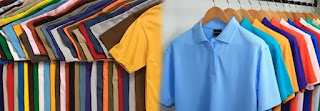Branches of Textile
The branches of textile include:
- Spinning
- Weaving
- Knitting
- Dyeing and Printing
- Finishing
- Graments
Spinning
Weaving
Knitting
Dyeing is the process of adding color to textile fibers, yarns, or fabrics. Dyeing can be done either before or after the yarn has been woven or knitted into fabric. Coloring is the method involved with adding variety to material filaments, yarns, or textures. Coloring should be possible either previously or after the yarn has been woven or weaved into texture. The color is normally applied to the filaments or texture in a fluid structure and afterward exposed to intensity, pressure, or different circumstances to fix the color and make a long-lasting variety.
fig.4.dyeing
Printing is the process of adding patterns or designs to textile fibers, yarns, or fabrics. Printing is the method involved with adding examples or plans to material strands, yarns, or textures. Printing should be possible either previously or after the yarn has been woven or sewn into texture. The plan is commonly applied to the filaments or texture utilizing a printing block, screen, or computerized printing innovation. Inks or shades are applied to the strands or texture through the printing block or screen, making the ideal example. The inks or shades are then fixed onto the filaments or texture to make a long-lasting plan.
fig.5.printingColoring and printing are basic strides in the material handling chain. They help to create a great many tones, examples, and plans, which permits producers to meet the differed needs of buyers.
Finishing
Completing is the method involved with applying different medicines to material filaments, yarns, or textures to work on their appearance, execution, and solidness. The objective of completing is to cause the materials to appear overall more appealing, feel improved, and last longer. Some normal completing medicines include:
Relaxing: utilizing synthetic substances or mechanical cycles to cause the texture to feel gentler and more agreeable against the skin.
Solidifying: utilizing synthetics or mechanical cycles to make the texture more inflexible or firm.
Water repellency: utilizing synthetic compounds or medicines to make the texture impervious to water.
Imperviousness to fire: utilizing synthetic compounds or medicines to make the texture less combustible.
Wrinkle obstruction: utilizing synthetics or medicines to make the texture more impervious to wrinkling.
Antimicrobial treatment: utilizing synthetic substances to make the texture impervious to the development of microbes and different microorganisms.
Completing is a significant stage in the material handling fasten as it assists with upgrading the appearance and execution of the eventual outcome, and it is in many cases the last move toward the creation cycle before the materials are cut and sewn into completed items. The decision of completing medicines relies upon the planned end utilization of the material and the ideal properties, like solace, appearance, and strength.
Garments
Garments are clothing items that are made from textiles and are designed to be worn on the body. Garments can be made from a variety of fibers, yarns, and fabrics and can be produced through various methods such as weaving, knitting, and printing.Pieces of clothing will be clothing things that are produced using materials and are intended to be worn on the body. Pieces of clothing can be produced using different strands, yarns, and textures and can be created through different techniques like winding around, weaving, and printing. Pieces of clothing can be redone to meet the particular requirements and inclinations of the purchaser and can be made in a scope of styles, varieties, and sizes. Instances of articles of clothing incorporate shirts, pants, dresses, skirts, coats, and shoes. Articles of clothing assume a significant part in our lives as they give security, solace, and style, and are fundamental for our day to day exercises and social communications.









0 Comments